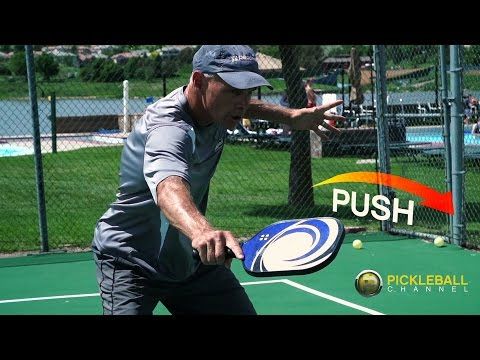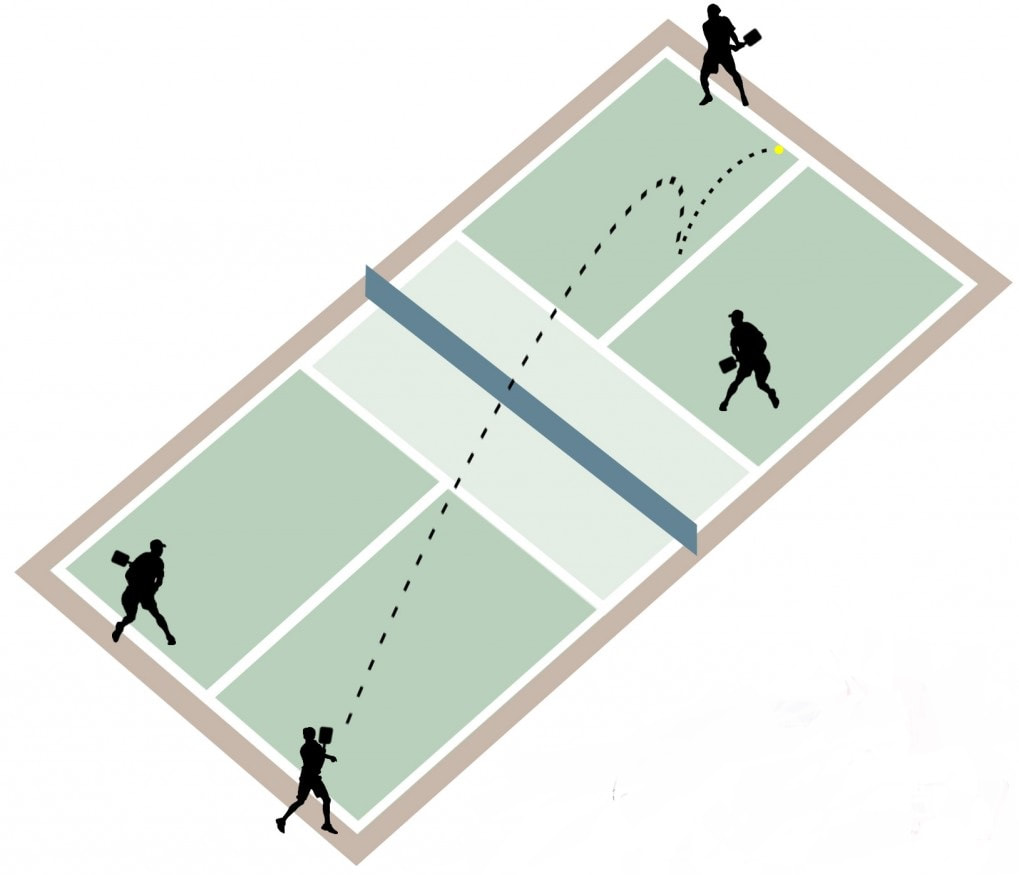Things you should know before buying Pickleball Paddle

We have made this manual for help players of all expertise levels pick the most ideal oar in view of their style of play, their physical properties, and their experience level. This guide is separated into seven noteworthy areas, each gave to particular point. In the event that you wish to bounce direct to a specific segment, tap on the connections underneath and they will take you straightforwardly to that segment of the page.
The Three Most Important Things to Consider When Selecting a best Pickleball Paddle
We offer more than 80 unique sorts of pickleball paddles. Dealing with what paddle is best for you can be somewhat overpowering! The most ideal approach to limit the decisions is to experiment with different oars, however for a large number of our clients that alternative isn't accessible. Thus, here are three key contemplations for everybody considering what pickleball oar to buy.
#1 Price. Great composite pickleball paddles begin at $50. There are three classes of oars - wood costs go from $13-$36, composite from $45-$125 and graphite from $60-$130. Note on wood paddles - Wood paddles are the slightest costly, be that as it may they are super overwhelming oars with a strong plywood center. They don't give the brilliant pickleball POP that players adore. In the wake of playing with the wood oars and testing out other players' composite oars, our clients frequently call us to put in a moment request for a composite or graphite paddle. In case you're new to pickleball and searching for your first oar, go for a cheap composite or graphite paddle immediately.
#2 Weight. Weight is the most essential factor while picking an oar. Pickleball oars can run from 6 to 14 ounces. Most composite or graphite paddles weigh from 6 to 9 ounces. Weight impacts how an oar feels when you lift it up and swing it on the court. For somebody without previous wounds, your decision of oar weight is totally up to your own wellness level and solace. A heavier oar will help you to drive the ball, yet will give less control of the ball. Notwithstanding, know that the largeness of the oar likewise quickens exhaustion in your arm, and can strain your elbow. On the other hand, an oar that is too light may not give enough drive but rather will build ball control.
#3 Grip Size. It is essential to play with an oar that has the right hold boundary for your hand. Playing with an oar grasp that is too huge may make the oar slip in your grasp and can prompt elbow issues. Hence on the off chance that you are endeavoring to settle on two sizes, attempt the littler size first. Littler holds consider more wrist activity, which helps in putting turn on the ball and upgrades control. This wrist activity likewise creates capable serves, and encourages speedy hand changes for those players that switch hands amid play. A bigger grasp will give greater strength, and be less demanding on your arm, so you can see that it is imperative to locate the "without flaw" measure for your hand. Focused pickleball players regularly tweak their oar holds utilizing an over-grasp to re-wrap their oar precisely to fit their own inclination.
All oar hold sizes are between 4 to 4 1/2 crawls in periphery. Like tennis, pickleball holds are separated into 1/8 inch increases. At PickleballCentral.com we have assessed each line of oars and recognized the grasp sizes by the 1/8 inch. The most widely recognized grasp sizes are 4 , 4 1/8, 4 1/4 and 4 1/2 inch boundary.
Why Paddle Weight Matters
Weight is likely the most imperative factor while picking an oar. Weight impacts how an oar feels when you lift it up and swing it on the court. For somebody without previous wounds, your decision of oar weight is totally up to your own wellness level and solace. Pickleball paddles run from six ounces to 14 ounces.
A heavier oar will help you to drive the ball, yet offers less control of the ball. In any case, know that the weight of the oar likewise quickens weariness in your arm, and can strain your elbow.
On the other hand, an oar that is too light won't give enough drive, might be hard to help in your grasp, yet will build ball control.
We have made this manual for help players of all expertise levels pick the most ideal oar in view of their style of play, their physical qualities, and their experience level. This guide is separated into seven noteworthy segments, each gave to particular subject. On the off chance that you wish to hop direct to a specific segment, tap on the connections beneath and they will take you specifically to that area of the page.
Think about 80+ Paddles in One Chart
The Three Most Important Considerations When Selecting a Pickleball Paddle
- Why Paddle Weight Matters
- Picking A Paddle If You Have Arthritis or an Injury
- Three Ways to Determine Your Hand Size
- Step by step instructions to Check the Fit of your PIckleball Paddle
- As often as possible Asked Questions When Choosing a Pickleball Paddle
The Three Most Important Things to Consider When Selecting a Pickleball Paddle
We offer more than 80 unique sorts of pickleball paddles. Dealing with what paddle is best for you can be somewhat overpowering! The most ideal approach to limit the decisions is to experiment with different oars, yet for huge numbers of our clients that alternative isn't accessible. Along these lines, here are three key contemplations for everybody considering what pickleball oar to buy.
#1 Price. Great composite pickleball paddles begin at $50. There are three classes of oars - wood costs go from $13-$36, composite from $45-$125 and graphite from $60-$130. Note on wood paddles - Wood paddles are the slightest costly, notwithstanding they are super overwhelming oars with a strong plywood center. They don't give the great pickleball POP that players cherish. In the wake of playing with the wood oars and testing out other players' composite oars, our clients frequently call us to put in a moment request for a composite or graphite paddle. In case you're new to pickleball and searching for your first oar, go for a reasonable composite or graphite paddle immediately.
#2 Weight. Weight is the most critical factor while picking an oar. Pickleball oars can go from 6 to 14 ounces. Most composite or graphite paddles weigh from 6 to 9 ounces. Weight impacts how an oar feels when you lift it up and swing it on the court. For somebody without prior wounds, your decision of oar weight is completely up to your own wellness level and solace. A heavier oar will help you to drive the ball, yet will give less control of the ball. Notwithstanding, know that the weight of the oar likewise quickens weariness in your arm, and can strain your elbow. On the other hand, an oar that is too light may not give enough drive but rather will expand ball control.
#3 Grip Size. It is critical to play with an oar that has the right hold periphery for your hand. Playing with an oar hold that is too enormous may make the oar slip in your grasp and can prompt elbow issues. Consequently on the off chance that you are attempting to settle on two sizes, attempt the littler size first. Littler grasps take into consideration more wrist activity, which helps in putting turn on the ball and improves control. This wrist activity likewise delivers intense serves, and encourages brisk hand changes for those players that switch hands amid play. A bigger hold will give greater dependability, and be less demanding on your arm, so you can see that it is essential to locate the "without flaw" measure for your hand. Aggressive pickleball players frequently alter their oar holds utilizing an over-grasp to re-wrap their oar precisely to fit their own inclination.
All oar grasp sizes are between 4 to 4 1/2 creeps in outline. Like tennis, pickleball grasps are separated into 1/8 inch increases. At PickleballCentral.com we have assessed each line of oars and recognized the grasp sizes by the 1/8 inch. The most well-known grasp sizes are 4 , 4 1/8, 4 1/4 and 4 1/2 inch periphery.
- Discover paddles by grasp measure
- Little: 4-4 1/8 inch grasp periphery paddles
- Medium: 4 1/4 inch grasp periphery paddles
- Expansive: 4 1/2 inch grasp boundary paddles
- Come back To The Top Of The Page
- Why Paddle Weight Matters
Weight is presumably the most critical factor while picking an oar. Weight impacts how an oar feels when you lift it up and swing it on the court. For somebody without previous wounds, your decision of oar weight is altogether up to your own wellness level and solace. Pickleball paddles extend from six ounces to 14 ounces.
A heavier oar will help you to drive the ball, yet offers less control of the ball. In any case, know that the greatness of the oar likewise quickens exhaustion in your arm, and can strain your elbow.
Alternately, an oar that is too light won't give enough drive, might be hard to help in your grasp, yet will expand ball control.
Come back To The Top Of The Page
Joint pain or Injury?
In the event that you have joint pain or damage to your hand, elbow or shoulder, we prescribe you select a center weight paddle in the vicinity of 7.3 and 8.4 ounces. This will be sufficiently overwhelming to give solidness and assimilate stun, yet sufficiently light not to assess your arm
Weight is presumably the most critical factor while picking an oar. Weight impacts how an oar feels when you lift it up and swing it on the court.
Try not to go too substantial. For individuals with hand, elbow or shoulder conditions, swinging an oar heavier than 8.4 ounces could kindle your damage or joint inflammation. Consequently, most all wood paddles are out of thought.
Try not to go too light. We consider a light weight oar to be any oar under 7.2 ounces. A light weight oar will expect you to put critical vitality, swing and force into each contact with the ball. The heaviness of the oar won't enable you to drive the ball. It resembles playing pickleball with a plume.
Center weight is perfect! We think a center weight paddle is perfect for somebody with damage or joint pain.
Don't have the foggiest idea about your hand estimate? Three Ways to Determine Hand Size
1. Stature test
This casual test should work for the two men and ladies. It's basic and works for the general population we've tried. Keep in mind, if all else fails, run with a littler hold. Snap here to take in more about the impacts of an evil fitting oar.
- Height...........Grip Size
- Under 5'2".......4 inch hold
- 5'3" to 5'8".....4 1/4 inch hold
- 5'9" and taller...4 1/2 inch hold
- 2. Ring Finger test
Hold your predominant palm up. Notice your palm has three noteworthy wrinkles. Take a ruler and measure from the center wrinkle of your palm, up to the tip of your ring finger. This estimation ought to mirror the ideal grasp measure for you. On the off chance that you are uncertain between two sizes, pick the littler size.
3. Printable grasp sizer graph
Here's a simple, print-out outline we intended to streamline the errand of deciding your grasp estimate. Print it out and decide your rough hold estimate.
The most effective method to Check the Fit of your Pickleball Paddle
To confirm the attack of your oar, or while attempting a few oars, utilize the accompanying technique to check estimating. In the event that you are uncertain between two sizes, pick the littler size. Here's the reason.
Hold an oar with your ordinary grasp and check whether you can slide the forefinger of your other hand between your fingertips and the foot sole area of your hand holding the oar. Your finger should fit cozily between the two without moving your fingers.
On the off chance that you should move your fingers more distant far from the foot sole area of the hand to get your pointer in the middle of the two, the hold may be too little.
In the event that you have space between your forefinger and your fingers or foot sole area of your hand, the hold may be too huge.
here is my video to Choose best pickelball paddle


